- Home
- Alistair Moffat
To the Island of Tides
To the Island of Tides Read online
TO THE
ISLAND
OF TIDES
Also by Alistair Moffat
The Sea Kingdoms: The History of Celtic Britain and Ireland
The Borders: A History of the Borders from Earliest Times
Before Scotland: The Story of Scotland Before History
Tyneside: A History of Newcastle and Gateshead from Earliest Times
The Reivers: The Story of the Border Reivers
The Wall: Rome’s Greatest Frontier
Tuscany: A History
The Highland Clans
The Faded Map: The Lost Kingdoms of Scotland
The Scots: A Genetic Journey
Britain’s Last Frontier: A Journey Along the Highland Line
The British: A Genetic Journey
Hawick: A History from Earliest Times
Bannockburn: The Battle for a Nation
Scotland: A History from Earliest Times
The Hidden Ways: Scotland’s Forgotten Roads
TO THE
ISLAND
OF TIDES
A JOURNEY TO LINDISFARNE
ALISTAIR MOFFAT
First published in Great Britain, the USA and Canada in 2019 by Canongate Books Ltd, 14 High Street, Edinburgh EH1 1TE
Distributed in the USA by Publishers Group West and in Canada by Publishers Group Canada
canongate.co.uk
This digital edition first published in 2019 by Canongate Books
Copyright © Alistair Moffat, 2019
Maps copyright © Andy Lovell, 2019
The moral right of the author has been asserted
British Library Cataloguing-in-Publication Data
A catalogue record for this book is available on request from the British Library
ISBN 978 1 78689 632 2
eISBN 978 1 78689 633 9
For Richard Buccleuch
Contents
Author’s Note
Preface: A Short History of Lindisfarne
PART ONE: TO THE ISLAND
Map: Journey to Lindisfarne
1. The Island of the Evening
2. The Hill of Faith
3. In the Sacred Land
4. Soul-Friends
5. In the Arms of Angels
6. The Quiet Waters By
7. Wandering
PART TWO: LINDISFARNE
Map: The Holy Island of Lindisfarne
8. On the Island of Tides
9. The Winds of Memory
10. Duneland
11. When God Walked in the Garden
12. Crossing the Causeway
13. The Rock
Epilogue: Godless
Acknowledgements
Index
Author’s Note
One of my most treasured possessions is a small cache of letters. Written in a looping, spidery hand with sentences that turn corners up the sides of pages before abruptly dipping overleaf, they are full of criticism and advice. The writer was a retired librarian and borrower of all my books but I never knew his or her name. Received over a four-year period, all of the letters were signed A Reader and no return address appeared at the top of the first of many pages. Not that there was room for one.
The last letter was never posted. It arrived inside another envelope with a compliments slip from a care home in Berwick-upon-Tweed. I took it that my critic had died before the letter could be dispatched and something prevented me from calling the care home to ask for a name. He or she had not wished to give it and I felt I ought to respect that.
Most of the criticism was a helpful mixture of pointing out blunders, a wrong date or mistaken identity and suchlike, and there were occasional comments on inaccurate use of language and poor style. ‘Posterity is not an interchangeable term for history’ and ‘using a dash is simply slovenly’ or ‘try not to over-use the ablative absolute at the beginning of a paragraph’.
His or her advice was to try to understand better the importance of place in history and to get out from in front of my screen and visit the sites of important events or where important people passed their lives. One letter surprised me by suggesting (or maybe insisting) that I should read the opening chapter of Daphne du Maurier’s Frenchman’s Creek, ‘a delicate and enchanting evocation of place and how it has been seen differently over the centuries’.
Before I began work on this book, I took this unexpected advice and re-read Frenchman’s Creek. I was indeed enchanted once more. At the peak of her powers, du Maurier wrote about the Helford River mouth on the Cornish coast and the inlet that gave her novel its title. Almost cinematic in its imagery, the opening chapter is intensely atmospheric, a world of winds, tides and a silence broken only by the call of nightjars. Du Maurier moves seamlessly between Restoration England and the twentieth century, establishing Navron House, the central location, and then, six pages in, the story begins with the reader transported almost trance-like back to the past. It is magical and masterly.
What my critical correspondent from Berwick was suggesting, if that is not too mild a verb, was that a deeper understanding of place would enhance the dry recital of dates and events that form the framework of a historical narrative. And more, it would make a powerful link between the present and even the deep past. Fernand Braudel, the great French historian, wrote of the longue durée, the notion that peoples in similar geographical, social and economic circumstances maintain habits of life and mind over vast reaches of time. If a sense of a place, its atmosphere as much as its topography and climate, could be caught and understood, then history would come alive.
About twelve years ago I was making a TV series on the history of Tyneside, a part of the world I am very fond of, and we were filming at Durham Cathedral. Setting up to shoot a sequence around the shrine of St Cuthbert, we were joined by the stern lady who ran the administration of the great church. I imagine she was checking that we were behaving ourselves. When she pronounced Cuthbert the greatest English saint, I felt compelled to point out that he had been born and raised in what is now Scotland. Before I could add that the border did not exist in the seventh century, she exclaimed, ‘Nonsense! Utter nonsense,’ and stormed off back down the nave. We packed up our gear, eventually completed the series and I moved on to another project. But I never forgot that exchange. Thirteen centuries after his death, Cuthbert’s exemplary life still attracted fierce loyalty, even passion, to say nothing of contested history. One day I would find the time to write about him.
In 2017, that day came when I began to think seriously about this book. I am no Christian, but sainthood and how it was and is achieved interests me very much. Heroes and heroic actions I can understand and admire, but the journey from ordinary life to an elevated, demi-godlike state is something I wanted to know more about. Cuthbert lived from approximately 635 to 687, a time of seismic cultural shifts in Britain, the period often known as the Dark Ages because of the dearth of extant written record. As Anglo-Saxon invaders became settlers who supplanted and submerged Celtic society over much of lowland Britain, languages were exchanged and enduring identities forged. It was a time of great, largely unreported turmoil.
Cuthbert is an Anglian name and he may have been born into the first or second generation of a landed family who settled in the Tweed Valley. I knew that around 651 he entered the monastery at Old Melrose, where he took holy orders. After some years there, he travelled east to the Holy Island of Lindisfarne, became prior of the monastery and eventually bishop before dying in his hermitage on the little island of Inner Farne. I thought that if I could understand something of his journey through life and, as importantly, through the landscape, then I might be able to move close to a sense of the man who walked with God.
I wanted to go to Lindisfa
rne, a deeply atmospheric place I have come to love, having visited it half a dozen times over the years. Now, its peace and spirituality seem even more to be valued, as political chaos swirls around us, as we blunder through the wilderness of a divisive and bitter world that seems at times to be irretrievably broken. And so I decided on what would become two journeys.
To be closer to Cuthbert, I wanted to walk where he walked and spend time in the places where he passed his life. I would begin at Old Melrose and travel down the banks of the Tweed to its confluence with the River Till before following Cuthbert inland to the moors of northern Northumberland. Once over the Kyloe Hills, I would find the coast and cross the causeway to Lindisfarne to complete what might be called a secular pilgrimage.
I also wanted to make the journey for myself. While walking in the shadow of Cuthbert and trying to understand his faith and the extreme lengths he went to in pursuit of piety and purity of thought and deed, I would also think about my own life. The contrast between his asceticism and beliefs and my lack of either could not have been more stark, but I hoped very much that I might learn something from Cuthbert.
And, dear Reader, I am sad not to be able to point out to you that no paragraph in this introduction begins with an ablative absolute, although I do recall that you also disliked sentences that begin with conjunctions.
Preface
A Short History of Lindisfarne
Having rattled through the featureless flatlands of the Fens and past the remains of the old industrial heartlands of South Yorkshire, travellers on the London train bound for Edinburgh pass a place of great majesty. As the carriages slow and glide through the small station, many look up from their newspapers or phones to gaze at Durham Cathedral. The mass of its towers and great nave perch on a river peninsula above the Wear and they speak of faith, of continuity, of solidity and of half-remembered history.
The interior of the cathedral is as awe-inspiring as the exterior. Immense pillars carry the soaring roof and lead the eye down to the high altar where the glorious stained glass of the rose window glows above it. Behind all of that splendour is what made it possible. On the floor is a slab of rust-coloured marble with the name ‘Cuthbertus’ inscribed on it. Durham Cathedral was raised on Cuthbert’s bones. Such was the power of his cult and the love believers felt for this gentle, vulnerable, deeply devout man that the towers of the great church soared to the heavens to celebrate his life, his miracles and his ability to inspire a simple and profound faith.
Beyond Newcastle, the train edges ever closer to the North Sea coast, as the lovely village of Alnmouth comes into view. Not far south of Berwick-upon-Tweed, a low, sandy island can be seen, its farthest point punctuated by a steep rock topped by a fairytale castle. Nearby a small cluster of rooftops huddle around the ruins of a church.
Lindisfarne’s beauty is quieter, less dramatic than Durham’s but its innate spiritual power is immeasurably greater. Saints walked on the island, miracles were seen, and between 685 and 687 Cuthbert was its bishop, master of a vast patrimony of land and glittering wealth. The sandy island was the centre of early Christianity in seventh-century England, a place where great faith was forged in the fires of privation, prayer and personal sacrifice.
Place-names can be emblematic, compressed nuggets of forgotten history, and the mouth-filling sensuousness of Lindisfarne may have a tale to tell. It seems that the Romans knew it as Insula Medicata, and that may have referred to an island where plants grew that were useful for making balms, poultices or decoctions. Dialects of Old Welsh were spoken down the length of Britain before and after the Roman province of Britannia, and the native name of Ynys Medcaut derived directly from the Latin name.
Throughout the fifth and sixth centuries Angles and Saxons sailed the North Sea from Scandinavia and what is now Germany and Holland to settle on the eastern shores of Britain. The kings of Lindsey ruled over the low-lying lands south of the Humber and their people knew themselves as the Lindisfaras. A band of them appears to have colonised Ynys Medcaut, perhaps building a defensive stockade on the rock where the castle now stands.
When Gaelic-speaking monks came to the island in the seventh century, they may have brought the second element of the island’s name. Fearann means ‘a piece of land’, and Lindis-fearann was coined: the land of the Lindisfaras.
Led by Aidan, twelve monks came from Columba’s famous monastery on Iona at the invitation of the Northumbrian King Oswald. As a young man he had been exiled and sought sanctuary on Iona, where he was baptised. Having won a decisive victory over a coalition of native British kings at Heavenfield, near Hadrian’s Wall, Oswald established his capital place on the sea-mark rock at Bamburgh. And so that support and resources were readily available to the new community, Aidan decided to build the first church and its monastic cells close by, on Lindisfarne.
With King Oswald translating his Gaelic for the pagan Anglian settlers, Aidan began the process of conversion. At Old Melrose on the River Tweed, then part of Northumbria, he founded another monastery. In 651 Cuthbert entered holy orders there and his long journey to Lindisfarne and sainthood form the core of the narrative that follows.
The Church in Britain was riven with controversy and in 663 Oswald’s brother, Oswy, convened a synod at Whitby to settle all arguments. Roman practices were preferred over the customs of the Celtic Church and Bishop Colman of Lindisfarne felt compelled to return to Iona. The story of these difficult times is concisely told (albeit not entirely objectively) by the greatest scholar of early medieval Britain, Bede of Jarrow, and he wrote of Cuthbert’s exasperation with those monks on the island who would not conform to Roman rules.
Lindisfarne became a place of immense richness. To provide an additional and prestigious focus for the cult of Cuthbert, Bishop Eadfrith painted one of the greatest works of art in our history, the Lindisfarne Gospels. Around the year 700, this glorious object was made on the island with extraordinary and unexpected skill. Not only would there have been a well-furnished library and plants grown to make pigments, but there were also monks who were able to create a tooled and bejewelled metalwork cover and who could bind the pages of calfskin. The great gospel book is an unlikely achievement for a community who lived in leaky wooden huts on a windy, sandy little island off the cold shoulder of the Northumbrian coast.
This beautiful book and other gilded treasures attracted unwelcome attention. In 793 the Vikings attacked the monastery, one of the first raids on the British mainland. Known as the Sons of Death, these pagan warriors eventually forced the community to abandon Lindisfarne. For about one hundred and fifty years, the Congregation of St Cuthbert wandered northern England, carrying with them the coffin, relics and treasures of St Cuthbert. In 995 all three were finally enshrined at Durham and by the early eleventh century the great cathedral had begun to rise.
In 1083 the old Anglian congregation was replaced by Benedictine monks and all links with Lindisfarne were in danger of being severed. The powerful prince-bishops of Durham determined to re-forge the relationship with the island where Cuthbert had spent the last years of his life. A priory was founded on the site of Aidan’s original monastery and its ruins dominate the modern village. The new church was built opposite the parish church of St Mary. The priory had been raised over the ruins of an earlier Anglian church. Very little can now be seen of the monastery where Aidan, Cuthbert and Eadfrith walked through their exemplary lives.
When Henry VIII’s dynastic difficulties persuaded him to dissolve England’s monasteries, Lindisfarne was quickly deserted, despite its venerable origins. After 1537, the island became a naval base in the sporadic wars with Scotland and stone was robbed out of the priory to build a fortress on the castle rock. Nevertheless, much of the priory church remained intact as late as the 1780s, when it was visited by antiquarians and artists. By the 1820s, the central tower and the south aisle had collapsed and much stone was carted off to build houses in the village and elsewhere.
In the last two hundred years, Lind
isfarne’s fame and spiritual magnetism have been reborn. Now thousands of visitors cross the causeway to visit the holy island, its priory and castle. As many of these modern pilgrims walk in the footsteps of great saints, they see more than ruins, feel more than a sense of the long past. They come because the island is still a place of spirits, a place where they can hear the whispered prayers of Cuthbert and the echo of psalms that were once sung under these huge skies.
PART ONE
TO THE ISLAND
1
The Island of the Evening
Most of a lifetime ago, in the summer of 1965, I walked across the causeway to Lindisfarne. Only just turned fifteen, I was one of three schoolboys intent on adventure, or at least a change of scene, something different from the dull school day routine that had just come to an end. Six glorious weeks of summer holiday were opening before us and we had decided to celebrate our freedom by travelling south-east from Kelso, our home town, to cross the border to the Northumberland coast and enjoy all the exotic differences of England.
I have no memory of the journey except for two moments, one misty, the other sharp. We must have walked on the roads, much less busy in those days, my companions and I, because my vague recollection is of pitching a tent, borrowed from the Boy Scouts, on a riverbank near the little town of Wooler. Midgies are what sticks in the mind, and everywhere else.
The sharper memory is of crossing the main line between Edinburgh Waverley and London King’s Cross at Beal. The white level-crossing gates were open and, it being a hot day, we stopped at the red brick station house on the far side to ask for a glass of water. This was a time long before anyone thought of bottling the stuff. In what I imagine must have been an interval between trains, the signalman/gatekeeper was in his garden tending to conical trusses of canes that were covered in the pale colours of sweet pea blossom. It was a still day and the air was thick with their scent.

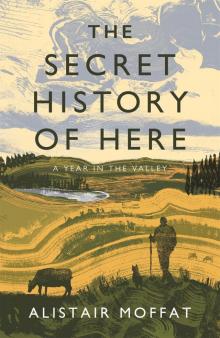 The Secret History of Here
The Secret History of Here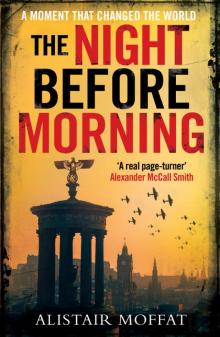 The Night Before Morning
The Night Before Morning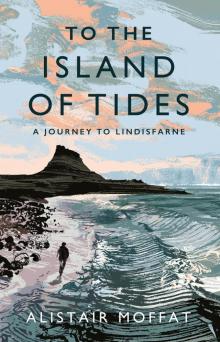 To the Island of Tides
To the Island of Tides Arthur and the Lost Kingdoms
Arthur and the Lost Kingdoms Britain’s Last Frontier
Britain’s Last Frontier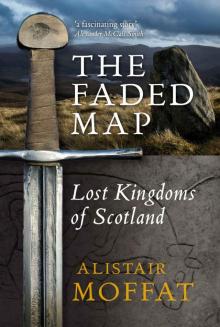 The Faded Map: The Lost Kingdoms of Scotland
The Faded Map: The Lost Kingdoms of Scotland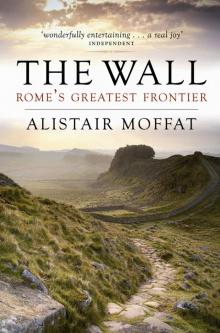 The Wall
The Wall